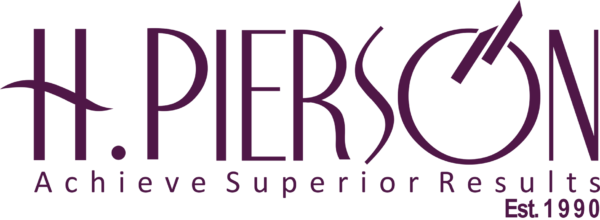5 trends shaping the future of Corporate Strategy
March 27, 2024 Strategy
Having foresight is key to developing a winning corporate strategy. But between sifting through a sea of data, navigating unpredictable events like the pandemic, and keeping up with the pace of technological innovation, knowing what to keep an eye out for can be challenging.
According to Gartner, the average corporate strategist spends 26% of their team’s time and around $200,000 of the annual budget investigating emerging trends. With the increased spending on corporate strategy expertise (up 51% YoY on Graphite), we wanted to know the trends shaping the future of this core functional skill.

To get to the bottom of this question, we engaged our network of experts on the ground floor in developing and executing corporate strategies for their clients on Graphite. Here are the five trends we unearthed.
1. Growth Strategy Will Take on a Whole New Meaning
For years, the role of corporate strategy was centered on where to play and how to win. But as the pace of disruption accelerates, it’s no longer enough to just focus on those areas. To succeed in today’s environment, corporate strategists must focus on speed and capabilities.
Yet focusing on speed and capabilities must also be done with caution. Rather than focusing on growth at all costs, the focus will be on making smarter, harder investment decisions that will lead to sustainable growth and a risk-averse portfolio.
A key component to accomplishing this will be finding new ways to differentiate the business from the competition. This will be done in several ways, either by M&A or building those capabilities within the business. Data and analytics, digital customer engagement, and the ability to create digital business models will factor greatly into strategic plans.
And while M&A growth will be more conservative when compared to 2021, it will still serve as a viable growth strategy as it relates to building out new business capabilities. In this regard, the use of data and technology as part of the transaction process and the ability to execute and move quickly will be vital for any M&A-led growth strategy.
2. Data and Market Research Will Play a Pivotal Role
Given the uncertainty of new and upcoming coronavirus variants, the economy, and geopolitical tensions, businesses are increasingly relying on data and market research to gain a competitive advantage.
Fueling this demand for information is the need to quickly synthesize patterns and trends to enable faster decision-making across the entire organization. From an operational perspective, data is essential in driving supply chain efficiencies. Visibility into inventory, distribution, and production goes a long way in protecting a company’s bottom line.
Likewise, the use of consumer data to inform go-to-market strategies enables companies to better position themselves when entering a new market or launching a new product or service. As digitization and the need to gain new capabilities increase, more emphasis will be placed on market research and data to ensure these initiatives succeed.
3. Building a Resilient Workforce amid Economic Uncertainty
Growing a team during uncertain economic times remains the main concern for CEOs this year. Leaders face a trifecta of challenges: a slowing economy, decreased profitability, and a tight labor market. Building a team that’s agile and resilient can future-proof the business. But where to start?
One way hiring managers are widening their talent pool is by leveraging a skill-based hiring model. By hiring for the right skill, companies can build a hyper-focused and more flexible workforce.
Another approach companies are exploring is on-demand talent acquisition platforms. This hiring model enables companies to build agile and flexible teams on demand— helping them pivot and innovate at a much faster pace than with traditional talent acquisition models.
Beyond filling an immediate need, businesses can upskill their workforce with the help of independent talent. Likewise, they can layer this hiring model on top of their existing talent strategy to build an agile operating model where talent can be deployed quickly to the highest priority work — ensuring strategic work gets done on time.
4. Developing More Flexible, Agile, and Adaptable Supply Chains
Supply chain issues will remain a hot-button area for businesses across industries for the foreseeable future. We’ve touched on this throughout this blog, as trends, like most things, are interconnected and influence and impact one another.
As businesses strive to optimize supply chain operations to satisfy consumer demand, they are using all the tools at their disposal. That means investing in data to facilitate the acquisition and implementation of automation, AI, and machine learning technologies to conduct M&As in adjacent sectors to remove barriers to resources.
To truly move beyond a reactive state, leaders will need to start focusing on producing the next disruption rather than waiting for it. As a result, companies will be relying more heavily on data and market research to compete effectively, not just with adjacent businesses, but with uncontrollable factors such as climate change as well.
This is especially true at a time when visibility, tracing, and sustainability are becoming central themes for supply chain leaders. As a result, ESG projects, although not a top priority at the start of the year, will continue to increase in the future.
5. Continued Acceleration of Digitization
Digitization has been an ongoing trend, but the pandemic put it into overdrive. Companies that did not have technology as a priority had to quickly pivot and reevaluate their stance on the tech and tools they use.
Today, the implementation of technology has permeated the entire business ecosystem. Companies are increasingly leaning into AI and machine learning to optimize supply chains, increase productivity, improve customer experiences, and enhance cybersecurity.
Business leaders show no signs of slowing down either. Global spending on technology is expected to rise by 2.4% this year. Despite an economic slowdown and cost-cutting efforts, companies remain firm in their commitment to digital initiatives by increasing their investments.
However, productivity and efficiency aren’t the only reasons behind the demand. Businesses are also analyzing how AI and machine learning can be used as a value driver rather than a cost factor.
John-David Lovelock, Gartner’s research vice president, says that IT spending remains recession-proof. He further states, “while inflation is devastating consumer markets, contributing to layoffs at B2C companies, enterprises continue to increase spending on digital business initiatives despite the world economic slowdown.”
It’s All about Staying Ahead of the Trends and Capturing Future Value Today
Corporate strategists today are dealing with multiple unknowns and must be able to pivot at a moment’s notice. Besides continuously developing holistic strategies that maximize the benefits of businesses’ investments and initiatives, they’re also expected to accomplish more with less.
In 2018, the average corporate strategy team consisted of five members. But with the shifts in today’s labor market, it’s likely that the sizes of these teams have either remained or changed, given the increased demand for this core functional skill.
One way to navigate the trends shaping corporate strategy’s future is to lean on independent experts to add capacity and horsepower to your teams. Adding expertise to your strategies can enhance the effectiveness of your projects while fast-tracking new projects and initiatives.
Want a look at how companies are using on-demand talent acquisition to power their corporate strategy teams? Read this blog on four ways companies are leveraging independent corporate strategy teams to learn how.
Source graphite.com


